Modulo Operator is one of the fundamental operators in Java It's a binary operator ie it requires two operands In a division operation, the remainder is returned by using modulo operator It is denoted by % (percentage) signLearn Python Learn Java Learn C Learn C# Learn R Learn Kotlin Learn Go Server Side Learn SQL Learn MySQL Learn PHP Learn ASP Learn Nodejs Learn Raspberry the division of two integers produces a quotient and a remainder In mathematics, the result of a modulo operation is the remainder of an arithmetic division Incrementing TheThe modulus operator returns the remainder of the two numbers after division If you are provided with two numbers, say, X and Y, X is the dividend and Y is the divisor, X mod Y is there a remainder of the division of X by Y Let me make you guys familiar with the technical representation of this operator

The Magical Percent Sign Modulo Operation And Remainder Operation Programmer Sought
Java modulo calculator
Java modulo calculator-The remainder assignment operator (%=) divides a variable by the value of the right operand and assigns the remainder to the variable This example shows how to use Java modulus operator (%) */ public class ModulusOperatorExample { public static void main (String args) {System out println ("Java Modulus Operator example");
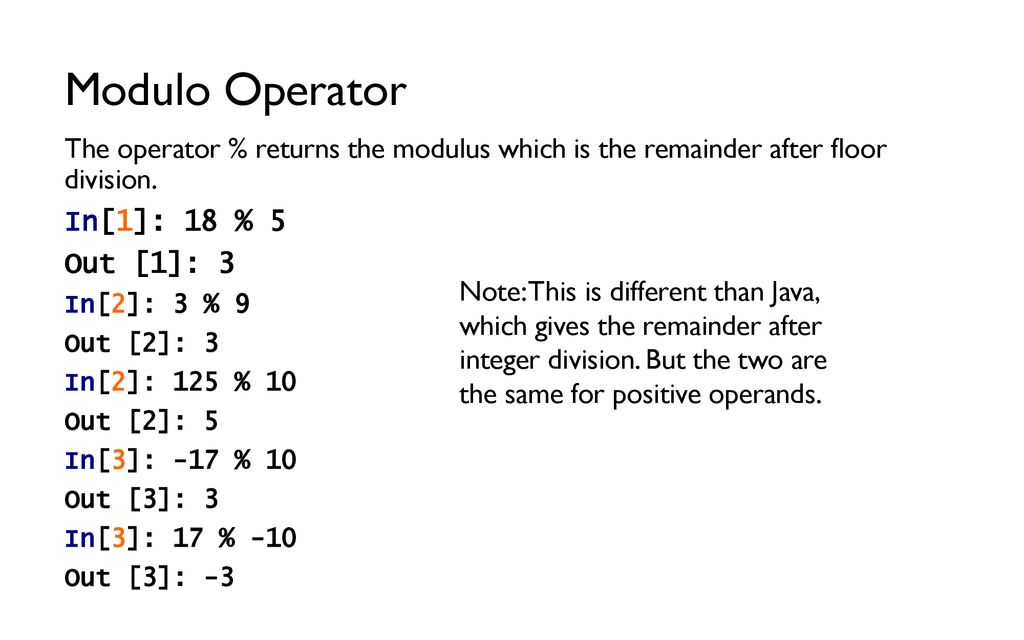



Introduction To Python Ppt Download
The Modulus Operator The modulus operator (%) is a useful operator in Java, it returns the remainder of a division operation It can be applied to theJava 9 Module System Java Module System is a major change in Java 9 version Java added this feature to collect Java packages and code into a single unit called module In earlier versions of Java, there was no concept of module to create modular Java applications, that why size of application increased and difficult to move around The modulus operator in Java is the percent character (%) Therefore taking an int % int returns another int The double equals (==) operator is used to compare values, such as a pair of ints and returns a boolean This is then assigned to the boolean variable 'isEven'
Modulo operation In computing, the modulo operation returns the remainder or signed remainder of a division, after one number is divided by another (called the modulus of the operation) Given two positive numbers a and n, a modulo n (abbreviated as a mod n) is the remainder of the Euclidean division of a by n, where a is the dividend and n isGiven two numbers, a (the dividend) and n (the divisor), a modulo n (abbreviated as a mod n) is the remainder from the division of a by n For instance, the expression "7 mod 5" would evaluate to 2 because 7 divided by 5 leaves a remainder of 2, while "10 mod 5" would evaluate to 0 because the division of 10 by 5 leaves a remainder of 0Free preview of my Java course https//coursealexlorenleecom/courses/learnjavafast Modulus is the remainder of division Here are a few examples using m
They act the same when the numbers are positive but much differently when the numbers are negative In Java, we can use MathfloorMod () to describe a modulo (or modulus) operation and %/* * Modulus operator returns reminder of the devision of * floating point or integer types */ Posted in java, javabasics By iba Posted on Last updated The Java modulus '%' operator is one of numerous operators built into the Java programming language The operator is used to calculate the remainder of the division between two numbers First, let us discuss how the operator works




Java Modulus Youtube
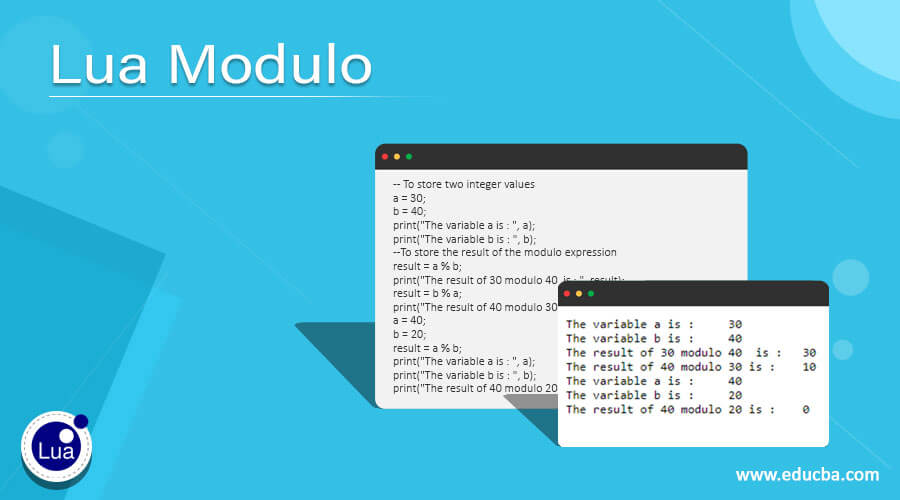



Lua Modulo Working And Examples Of Lua Modulo Operator
JavamathBigIntegermod() Method The javamathBigIntegermod(BigInteger m) returns a BigInteger whose value is (this mod m) This method differs from remainder Java has one important arithmetical operator you may not be familiar with, %, also known as the modulus operatorThe modulus operator, % returns the remainder of a division operation eg, 15 % 4 = 3, 7 % 3 = 1, 5 % 5 = 0 As shown above, when we divide 17 (dividend) with 3 (divisor) then the quotient is 5 and the modulus (or remainder) is 2 Modulo or Remainder Operator returns the remainder of the two numbers after division If you are provided with two numbers, say A and B, A is the dividend and B is the divisor, A mod B is there a remainder of the division of A and B Modulo operator is an arithmetical operator which is denoted by %




What Is The Result Of In Python Stack Overflow




Java Arithmetic Operators Example Computer Notes
When you use the modulo, you can compare it to anything ===1, >=3, Modulo operator helps us to find the remainder of the two numbers suppose we have two numbers 5 and 2 where number 1 is dividend and number2 is a divisor ( number 1 % number 2 = Remainder ) reactgocom recommended course JavaScript The Complete Guide 21 (Beginner Advanced) 5 % 2 = 1 10 % 2 = 0 9 % 3 = 0In C, C and Java, modulo is represented as the percent sign int a = % 5 ;



Numbers In Ruby Ruby Study Notes Best Ruby Guide Ruby Tutorial




Introduction To Python Ppt Download
The modulo operation (% in Java) returns the remainder of a division and can be used to convert an input into a number within a fixed range You can also use modulo to determine if one number is exactly divisible by another (since modulo will return a remainder of 0) Modulo is usually implemented by division which is normally the slowestRemainder / Modulo The remainder math operation performs an integer division of one value by another and returns the remained of that division The remainder operation is also called the modulo operation The operator for the remainder / modulo operation is the % (percentage) character Here is a module operation exampleJava Modulo Operator Examples Dot Net Perls Java Modulo Operator Examples Use the modulo operator to compute remainders in division Loop and compute a simple hash code dot net perls Modulo In programs we often use the modulo division operator to compute remainders A "%" performs modulo division It returns the part left over when the




Input A String Of Numbers In Java And Output In Reverse Order Programmer Sought




How Modulo Works In Python Explained With 6 Examples
Java divides the operators into the following groups Arithmetic operators Assignment operators Comparison operators Logical operatorsWould result in the remainder of 2 being stored in the variable resultOfMod It is a fair map with a bias for smaller values It works, but a modulo reduction involves a division, and divisions are expensive Much more expensive than multiplications A single 32bit division on a recent x64 processor has a throughput of one instruction every six cycles with a latency of 26 cycles




Analyzing The Math Floor Ceil And Modulo Operator Docsity
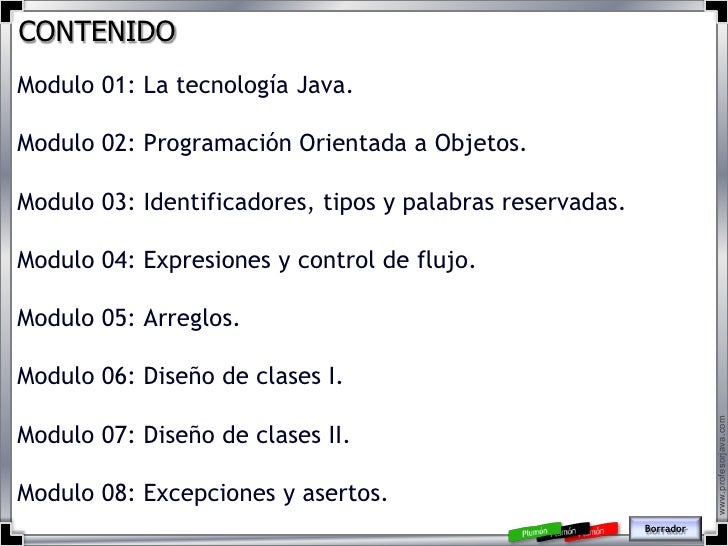



Curso De Programacion Java Intermedio
The Java Platform Module System specifies a distribution format for collections of Java code and associated resources It also specifies a repository for storing these collections, or modules, and identifies how they can be discovered, loaded and checked for integrityIt includes features such as namespaces with the aim of fixing some of the shortcomings in the existing JAR format, Given two integers 'a' and 'm', find modular multiplicative inverse of 'a' under modulo 'm' The modular multiplicative inverse is an integer 'x' such that a x ≅ 1 (mod m) The value of x should be in { 1, 2, m1}, ie, in the range of integer modulo m The JavaScript modulo operator, represented by a percentage sign, returns the remainder of a division sum You can refer to the modulo operator by this name, as a modulus operator, or as a remainder operator Not all numbers can be evenly divided 9 cannot be divided by 4 without yielding a decimal number




What S The Syntax For Mod In Java Stack Overflow
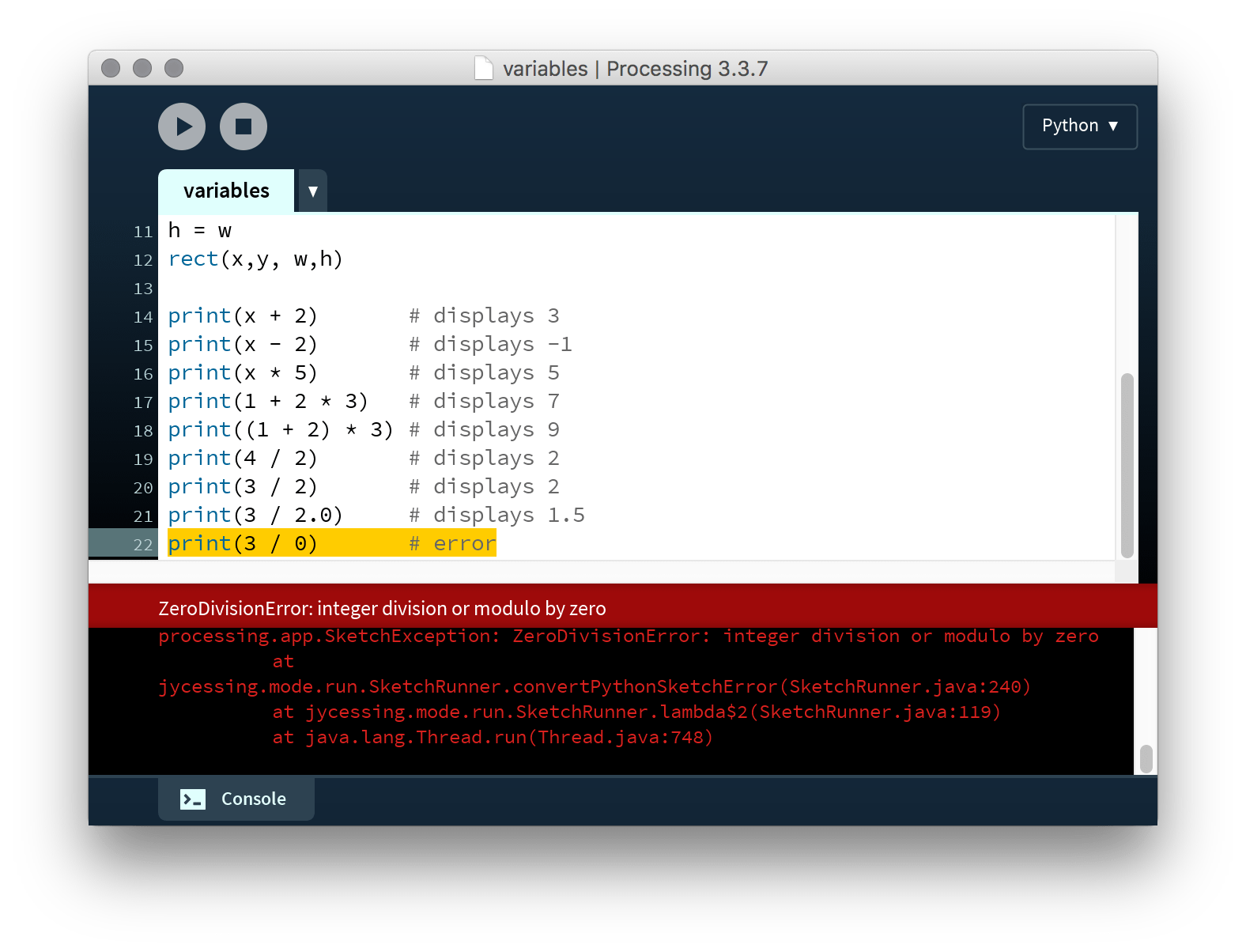



Processing Py In Ten Lessons 1 5 Arithmetic Operators
Sets a to be zero Modulo has a variety of uses Use the % Operator to Calculate the Mod of Two Number in Java The modulus or modulo operator returns the remainder of the two integers after division It is utilized in simple tasks like figuring out a number is even or not and more complex tasks like tracking the next writing position in a circular arrayThe javamathBigDecimalremainder (BigDecimal divisor) method returns a BigDecimal whose value is (this % divisor) The remainder is given by thissubtract (thisdivideToIntegralValue (divisor)multiply (divisor)) This is not the modulo operation ie the result can be negative



How Does The Modulus Operator Works Quora




Divide Two Numbers Without Using Operator In Java Code With Shibu
The modulo operator is based on the same equations, but it uses Mathfloor () to compute quotients If both dividend and divisor are positive, the modulo operator produces the same results as the remainder operator (example 3) If, however, dividend and divisor have different signs, then the results are different (example 4)Java Modulo operator or modulus operator is used to getting the remainder when we divide an integer with another integer Table of Contents show Java Modulo Operator Syntax The % character is the modulus operator in Java Java Basic Exercise65 with Solution Write a Java program to calculate the modules of two numbers without using any inbuilt modulus operator Test data Input the first number 5 Input the second number 3 2 Input the first number 19 Input the second number 7 5 Sample Solution Java Code




Pure Java Font Batch Modulo And Modification Software Programmer Sought




Operators Part 4 Modulus Division Java Youtube
Java 9 introduced the Module system under the project name Project Jigsaw This altered the existing structure of Java projects Java projects can be now encapsulated into modules and each module can be separately packaged into a jar or a run time (customized JRE) Until the module system came out , every Java project hasJavaScript Tutorial Operators Mod Modulus (%) operator returns only the remainder If either value is a string, an attempt is made to convert the string to a number For example, the following line of code var resultOfMod = 26 % 3; What is a Modulus operator in Java?




Module 3 Java Operators Object Oriented Programmingjava Java




Java67 How To Use Modulo Modulus Or Remainder Operator In Java Example
Both remainder and modulo are two similar operations;A Java module is a packaging mechanism that enables you to package a Java application or Java API as a separate Java module A Java module is packaged as a modular JAR file A Java module can specify which of the Java packages it contains that should be visible to other Java modules which uses this moduleRemainder (%) The remainder operator ( %) returns the remainder left over when one operand is divided by a second operand It always takes the sign of the dividend Note that while in most languages, '%' is a remainder operator, in some (eg Python, Perl) it is a modulo operator For positive values, the two are equivalent, but when the




Java Modulo Operator Modulus Operator In Java Java2blog




Java Modulus Operator Remainder Of Division Java Tutorial
Semantics of arithmetic operations exactly mimic those of Java's integer arithmetic operators, as defined in The Java Language Specification For example, division by zero throws an ArithmeticException, and division of a negative by a positive yields a negative (or zero) remainder All of the details in the Spec concerning overflow are ignoredHey guys, welcome to the 11th tutorial of this series and in this series we are going to cover a special type of operator called Modulus operatorSubscribe iJava modulo vs remainder Modulo division vs remainder division java Stack Overflo mathematicaly, modulo is division with remainder 7 mod 4 = 1 R3 see n = a * m r The modulo operator in Java (like in most other languages) gives only the remainder part and not i dont know, if it works with negative numbers correct




011 Using Operators And Modulus Division In Java Youtube



1
Incremental Java Modulus Operator Modulus Operator If both operands for /, the division operator have type int, then integer division is performedThis is regular division, where the remainder is thrown away What if we needed the remainder?




Object Oriented Programming With Java Part I Exercise 16




Silicon Vanity Tech Lifestyle In Silicon Valley Codecademy Learn Java Tutorial Walkthrough 9 Math Modulo




Java Modulus Tutorial Learn Modulus In Java Youtube




Ngjackson




Modulo Java Jiva




Java Modulo 2 Mod Calculates The Remainder Example 2 Youtube




Problem 4 Tuesday Tutorial Java Modulus And If Then Else Statements And Or Youtube




Java Decompiler Assessment Pipeline With Four Evaluation Layers Download Scientific Diagram




Modulos En Java Aplicacion Con Ejemplo Java Desde Cero




Learning Journal Blog Java




Java 9 Modulo Les Modules Devoxx Fr 17




Solved Consider The Following Java Expression 1 0 4 77 Chegg Com




Check If A Number Is Even Or Odd Without Using Modulo Or Division Operators In Java



Modulo Java
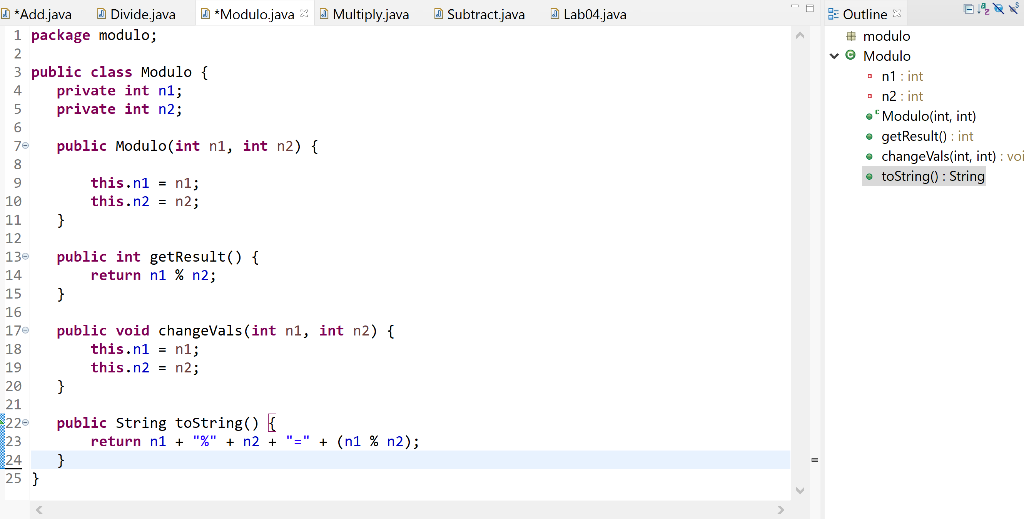



I Need Help With This Lab I Barely Started Using Chegg Com




Eje Everyones Java Editor
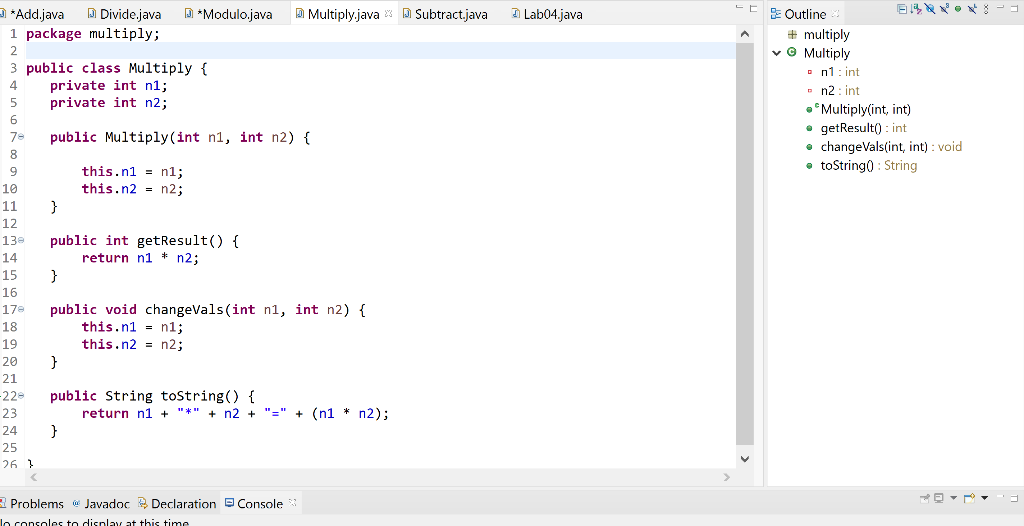



I Need Help With This Lab I Barely Started Using Chegg Com




Mod And Remainder Of The Difference Between Java Inside Biginteger Programmer Sought



Modulus In Java Remainder Or Modulus Operator In Java Edureka




I Can T Figure Out Why Drjava Won T Output Unicode Symbols Stack Overflow




Modulo In Order Of Operation Stack Overflow




The Difference Between Modulo And Modulo Programmer Sought




Pin By Alicia Cerna Pajuelo On Modulo Ventas Java Boarding Pass



Modulo In Der Variable Einsetzen Ist Das Moglich Java Hilfe Java Forum Org




The Pyth Language Lecture 5 Prof Hilfinger Cs




M O D U L O O P E R A T O R Zonealarm Results




The Magical Percent Sign Modulo Operation And Remainder Operation Programmer Sought




Java Using Math Floormod To Describe A Modulo Or Modulus Operation And Operator For The Remainder Operation T Co Tm1nkjpiuu T Co Tlnfn3xdgs



3




Algoritmo Java Modulo 11 The Modulo Operator In Java




Java中的modulo与vbscript之间的区别 21
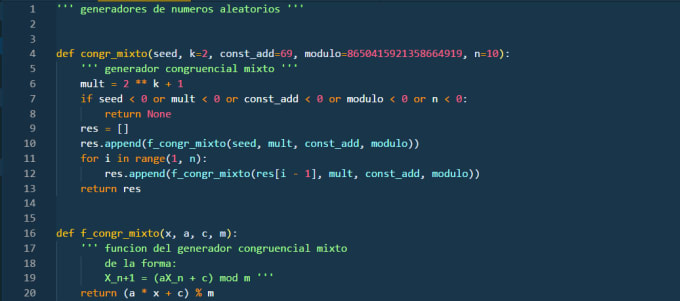



Solve And Explain Your Programming Tasks In Java By Angellomon Fiverr
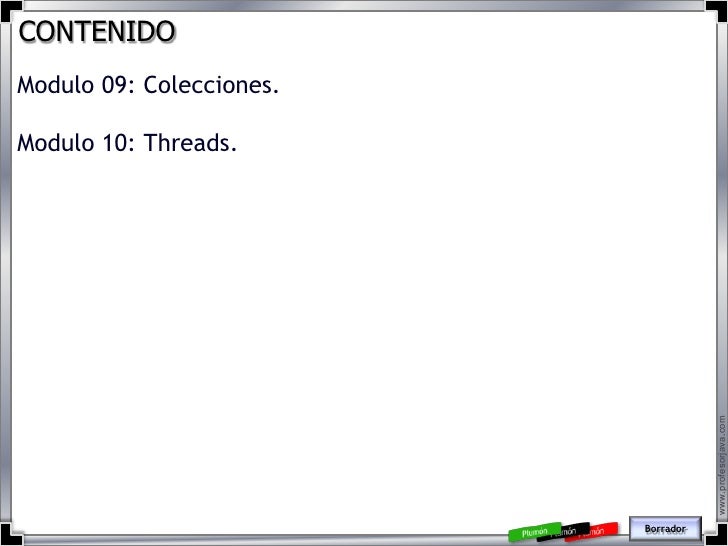



Curso De Programacion Java Intermedio




University Coding Java Program I Have Written This Program But Am Still Getting Some Errors And Can T Figure Them Out Anyone Know What I Ve Done Wrong Homeworkhelp




Modulo Calculator For Android Apk Download




Mod Division In Java Vertex Academy



Modulo Problem In Java Dreamix Group



Java Scitechtrain Com



Casting Converting Numbers




What Is The Result Of In Python Stack Overflow




Check If A Number Is Even Or Odd Without Using Modulo Or Division Operators In Java



My Java Notebook I




Modulo Check Mod Operator Visual Basic




Interface Grafica Do Modulo Off Card Download Scientific Diagram




Amazon Com Modulo Calculator Appstore For Android
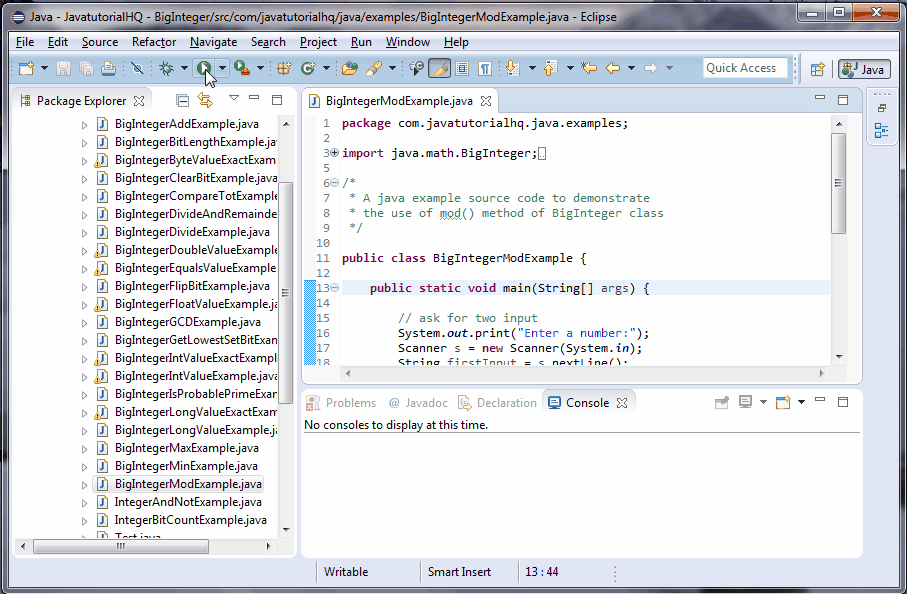



Java Biginteger Mod Method Example




Mod Division In Java Vertex Academy




How To Check If The Input Is String Or Interger Or Double In Java Code Example




Mod Division In Java Vertex Academy




Check Whether Number Is Even Or Odd Stack Overflow




Java Basics Java Highlevel Language More Readable For




Use The Modulo Function The Size Of An Array Of Chegg Com




01 Intro Java Part1 1 Introduction To Java And Drjava Barb Ericson Georgia Institute Of Technology June Ppt Download




Modular Arithmetic



1




Simple Java Modulo Aufgabe Wer Kann Mir Helfen Computer Programmieren Informatik




Java Tutorial Division And Modulo Operator Explained Youtube
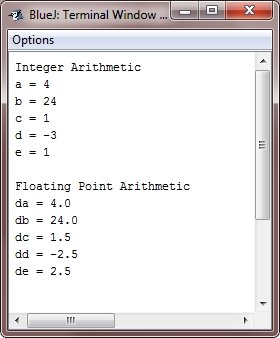



Java Arithmetic And Modulus Operator




Check If Type In Float In Java Code Example




Java Modulo Operator Modulus Operator In Java Journaldev




Solved Implement A Java Application Capable Of Applying M Chegg Com



Casting Converting Numbers




Mod Division In Java Vertex Academy




Addition In Java Code Method Examples Video Lesson Transcript Study Com




Java Tutorial 13 Modulo Youtube




Mod And Remainder Are Not The Same




Deep Dive Into Java Operators Vibrant Publishers




Java Modulus Operator Remainder Of Division Java Tutorial




Mod Division In Java Vertex Academy




Multiplying In Java Method Examples Video Lesson Transcript Study Com



Java Modulus Operator Modulus Operator In Java




Modulo 2 Recursos Java Flashcards




Java Eclipse Modulus Operator Demo Youtube




Dark Horse At The End Of Java Period 2 Operators Programmer Sought




Java A To Z With Java Jayan Java Modulus




Modulo Problem In Java Dreamix Group




Use The Modulo Function The Size Of An Array Of Chegg Com




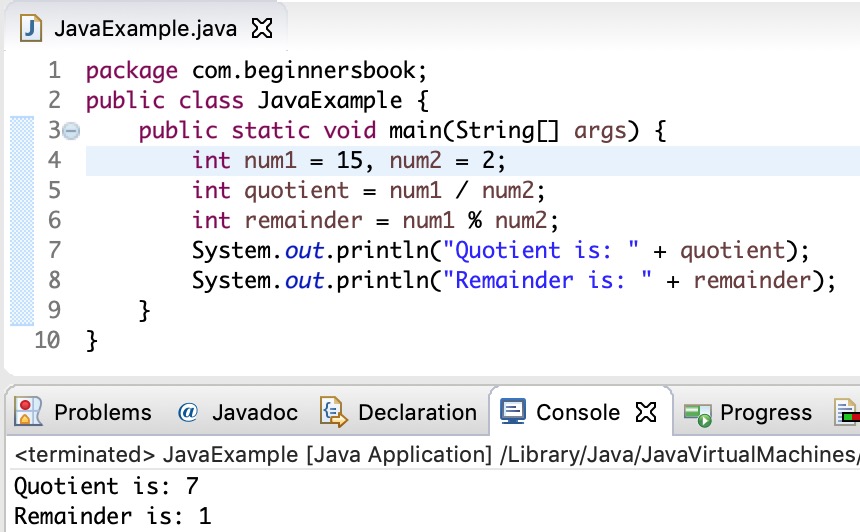



Java Program To Find Quotient And Remainder




The Python Modulo Operator What Does The Symbol Mean In Python Solved




Modulo Operation Wikipedia



1



0 件のコメント:
コメントを投稿